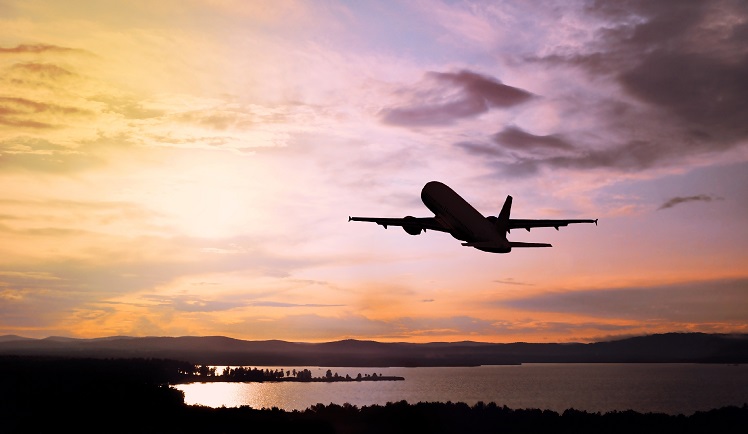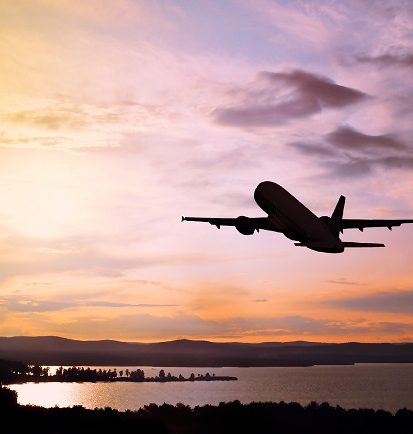Uncategorized
What is a Red Eye Flight? Understanding Overnight Air Travel

A red eye flight is an overnight journey that typically departs late at night and arrives the following morning. These flights allow travellers to maximise their time by utilising the night hours for travel, making it possible to arrive at their destination bright and early. While they often save time, they may come with challenges like disrupted sleep patterns.
Many people opt for red eye flights to avoid the hassle of daytime travel, especially on long routes such as those between the East and West Coasts of the United States.
Understanding the advantages and disadvantages of these flights can significantly impact your travel experience. Preparing properly can enhance comfort and mitigate some of the adverse effects associated with flying overnight.
If you’re considering taking a red eye flight for your next trip, it’s essential to know what to expect and how to make the most of your journey. With the right tips and insights, you can transform what might seem like a tiring ordeal into a convenient and efficient travel option.
Key Takeaways
- Red eye flights depart late at night and arrive in the morning.
- They offer time-saving benefits but may disrupt your sleep.
- Proper preparation can enhance your overall travel experience.
What is a Red Eye Flight?
A red-eye flight refers to an overnight flight that usually departs late in the evening and arrives the following morning. This type of flight is designed to maximise travel time while minimising disruption to your schedule.
Origin of the Term ‘Red Eye’
The term ‘red eye’ is derived from the appearance of tired eyes after a night of inadequate sleep. Passengers on these flights often experience fatigue, resulting in bloodshot eyes.
Commercial aviation refers to red-eye flights as those that typically depart between 9:00 PM and 1:00 AM, landing early the next morning.
These flights are especially popular for long-haul journeys, allowing travellers to save a night’s accommodation.
Major routes for red-eye flights are common across regions, particularly in the United States, connecting cities like New York and Los Angeles. Understanding the term can help you decide if this travel option suits your needs.
Advantages and Disadvantages
When considering red eye flights, it is crucial to weigh both the benefits and drawbacks. This can help you make an informed decision about whether to book one for your next journey.
Pros of Taking Red Eye Flights
Red eye flights offer several advantages that can enhance your travel experience.
1. Time Efficiency: By travelling overnight, you save daytime hours, allowing you to maximise your time at your destination. You can arrive early in the morning, ready to start your day.
2. Cost-Effective: These flights often come at a lower price compared to daytime flights. This can result in significant savings, making your trip more economical.
3. Fewer Crowds: Airports tend to be less busy at night, leading to shorter lines for check-in and security. This allows for a smoother travel experience.
4. More Options for Sightseeing: Arriving in the morning means you have a full day ahead for activities, making it possible to enjoy more attractions on your trip.
Cons of Taking Red Eye Flights
Despite the benefits, there are certain disadvantages you should consider before booking a red eye flight.
1. Sleep Disruption: The main challenge is the lack of quality sleep. Seats may be uncomfortable for resting, and noise levels can prevent deep sleep.
2. Fatigue Upon Arrival: You may feel groggy or jet-lagged after arriving, affecting your ability to engage fully with your day’s plans.
3. Limited Services: Amenities can be minimal during nighttime flights. For example, food and beverage services may be restricted, which could impact your comfort.
4. Health Concerns: There are potential health implications, such as increased risk of deep vein thrombosis (DVT) from sitting for long periods. Staying hydrated and moving around is essential during long flights.
Routes and Duration of Red Eye Flight
Understanding the common routes for red eye flights is essential for planning your travel. You will also find that the duration of these flights varies significantly, impacting your overall journey.
1. Popular Red Eye Routes
Red eye flights are primarily popular on longer routes where time efficiency is crucial. Some of the most common routes include:
- Los Angeles to New York City: This flight typically departs around 11 PM and arrives at approximately 7 AM the next day.
- San Francisco to New York City: Operating similarly to the Los Angeles route, flights leave late at night and arrive early in the morning.
- Seattle to Chicago: This route is also common, catering to business travellers needing to arrive before the workday begins.
Other frequent routes include flights from the East Coast to Europe, where departing in the evening ensures that you arrive the following morning.
2. Average Duration of Flights
The duration of red eye flights averages between four to six hours, depending on the specific route. For instance:
- A flight from Los Angeles to New York usually takes about five to six hours.
- Similarly, Seattle to Chicago averages around four hours.
These durations are conducive to overnight travel, allowing you to maximise your time at the destination. Since most red eye flights are designed for longer distances, they may become an efficient choice for those looking to avoid daytime travel delays and crowding.
Tips for Travelling on Red Eye Flights
When preparing for a red-eye flight, making the right choices can significantly enhance your comfort and experience. Focus on selecting the optimal seat and adopting effective strategies to help you sleep during the flight.
1. Choose the Right Seat
Selecting the right seat can greatly influence your comfort levels during a red-eye flight. Consider opting for a window seat, as it allows you to lean against the wall and helps reduce disturbances from fellow passengers.
If you prefer extra legroom, aim for an exit row or bulkhead seat. These often provide additional space and a less cramped environment.
Use the airline’s seat selection tool or consult reviews on platforms like SeatGuru to find seats with the best reviews. Make your selection as early as possible to secure your ideal spot.
Avoid seats near the galley or restrooms, as these areas tend to be noisier and more trafficked.
2. Strategies for Sleeping Onboard
Getting quality rest on a red-eye flight requires planning and preparation. First, consider bringing a high-quality neck pillow; it can support your head and neck, helping you sleep more comfortably. Memory foam options offer additional support and comfort.
Pack an eye mask and noise-cancelling headphones or earplugs to minimise light and noise disruptions. This creates a more conducive environment for sleep.
Avoid caffeine and heavy meals before the flight. Instead, opt for a light snack, as this helps prevent discomfort during sleep. Lastly, try to adjust your sleep schedule a day before your flight to align with your destination’s time zone, making it easier to sleep onboard.
With these strategies in mind, you can enhance your red-eye flight experience significantly.
Implications for Health and Productivity
Taking a red-eye flight can significantly affect your health and productivity, with factors like jet lag and the impact on your following day worth considering. It’s essential to understand these implications to manage your travel better.
1. Jet Lag Considerations
You may experience jet lag after a red-eye flight, especially if crossing multiple time zones. This condition arises from a mismatch between your internal clock and the new local time.
Symptoms can include fatigue, difficulty concentrating, and mood disturbances.
To mitigate jet lag, consider adjusting your sleep schedule before departure. Staying hydrated during the flight and limiting caffeine intake can also help.
Melatonin supplements might be beneficial for some, aiding in synchronising your body clock to the new time zone.
2. Impact on Next-Day Activities
The effects of a red-eye flight can linger into the next day, impacting your productivity. You might find it challenging to function effectively, particularly if you have key meetings or responsibilities.
You can enhance your next-day performance by planning for adequate rest after arrival. Short naps may help recharge your energy levels. It’s also wise to prioritise simple tasks initially, allowing your mind to regain focus gradually. Staying active and getting sunlight can stimulate alertness, helping combat fatigue.
FAQs
What times typically define a red-eye flight?
A red-eye flight usually departs between 9:00 PM and 1:00 AM, landing at its destination in the early morning hours, typically between 5:00 AM and 7:00 AM. These timings allow for overnight travel, maximising daytime hours at your destination.
How can one book a red-eye flight?
You can book a red-eye flight through various methods, including airline websites, travel agencies, and flight comparison tools. Simply select your desired dates and specify the night departure options to view available flights. Many search engines allow you to filter results specifically for these overnight journeys.
What advantages are there to flying on a red-eye?
Flying on a red-eye flight can help you save on accommodation costs since you travel overnight. You also arrive at your destination ready to begin your activities early in the day. This scheduling is particularly useful for business trips or when planning short getaways.
Are there any increased risks when taking a red-eye flight?
While red-eye flights can be convenient, there are potential risks, such as increased fatigue and disrupted sleep patterns. This can affect your alertness upon arrival, and you may experience a higher incidence of jet lag if travelling long distances. Staying hydrated and adhering to good pre-flight practices can mitigate these issues.
How does the cost of red-eye flights compare to other flights?
Typically, the cost of red-eye flights can be comparable to daytime flights, but this can vary based on demand and specific routes. Sometimes, airlines offer lower fares for red-eye options to encourage bookings. Checking for deals and being flexible with your travel dates can yield potential savings.
What distinguishes a ‘black eye’ flight from a red-eye flight?
The term ‘black eye’ flight is less common and usually refers to flights that depart even later in the night or in the early hours of the morning, landing after sunrise. These flights might provide less opportunity for rest compared to traditional red-eye flights, which are designed for overnight travel.




